This video of a recent NATO Mountain Warfare Rescue exercise in Slovenia features the Gravity Industries Jet Suit.
This video of a recent NATO Mountain Warfare Rescue exercise in Slovenia features the Gravity Industries Jet Suit.
QUANTICO, VA —
The Marine Corps continues to leverage additive manufacturing to benefit the warfighter.
This summer, the Program Manager for Ammunition at Marine Corps Systems Command 3D printed a headcap for a rocket motor used to detonate a M58 Mine Clearing Line Charge. The MICLIC is a rocket-projected explosive line charge that provides a demining capability for Marines.
“The process of 3D printing allows Marines to create a physical object from a digital design,” said CWO2 Justin Trejo, a project officer with PM Ammo at MCSC. “We essentially created a 3D-printed product and incorporated it into a highly explosive system.”
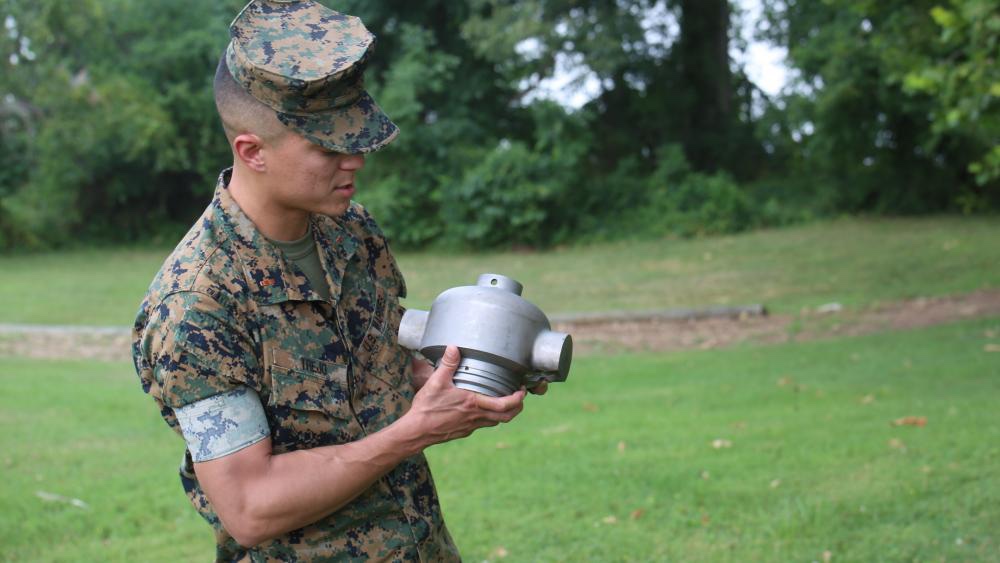
Marines use the MICLIC to clear paths through minefields and other obstacles on the battlefield. However, traditional manufacturing methods for creating the headcap can be both timely and costly, said Trejo. MCSC wanted to identify a more efficient method for producing the part.
PM Ammo found the answer to this dilemma in additive manufacturing.
In 2019, PM Ammo began exploring alternative solutions for manufacturing the headcap. After many hours of research as well as developing and testing a prototype headcap, the team collaborated with Naval Surface Warfare Center Corona Division to produce a 3D-printed version.
Earlier this year, NSWC Corona produced the 3D-printed, stainless steel solution. The next month, PM Ammo representatives assessed the 3D product during a test event at Yuma Proving Ground in Yuma, Arizona. The evaluation involved launching the rocket motor to detonate the mine-clearing line charge.
Trejo said the event went flawlessly.
“The rocket motor fired off just as intended and the line charge detonated as it is supposed to, which was a significant moment for us.”
-CWO2 Justin Trejo, Project officer with PM Ammo at MCSC
“In the future, we’d like to attempt to 3D print the headcap with its nozzles attached,” said Trejo.
He stressed the significance of the successful test event because it further confirmed the effectiveness of 3D printing, which has been growing in popularity within the Department of Defense.
Additive manufacturing provides Marines with a streamlined solution to meet their needs. In 2019, MCSC established its Advanced Manufacturing Operations Cell to serve as a 24/7 help desk for Marines who need assistance with 3D printing, and other sustainment and manufacturing solutions.
AMOC is available to answer questions, field requests for prints and fully vet any part that requires fabrication by a Marine organization. The team of skilled Marines and civilians has employed additive manufacturing to develop everything from innovative maintenance tools to a reinforced concrete bridge.
Caleb Hughes, an engineer with MCSC’s PM Ammo who supported the Yuma testing event, said 3D printing saves the Marine Corps time and money.
“The previous process of traditional manufacturing is outdated, while 3D printing is a more modern manufacturing technique,” said Hughes. “I truly believe 3D printing is the next generation of the Marine Corps.”
Trejo believes additive manufacturing aligns with Commandant of the Marine Corps Gen. David Berger’s vision in that 3D printing helps increase Marines’ battlefield efficiency. Trejo said the manufacturing method enables the warfighter to be “lighter and faster,” critical attributes when supporting various missions.
“We’re able to create equipment parts and other assets for whatever particular mission we’re engaged in,” said Trejo. “This 3D-printed headcap represents the Marine Corps going above and beyond to support our Marines.”
By Matt Gonzales, Marine Corps Systems Command
HENSOLDT and Nano Dimension establish joint venture for 3D printing platform
Taufkirchen/Germany, 01 July 2021 – Sensor solutions provider HENSOLDT is strengthening its commitment to the future technology of 3D printing: together with 3D printer manufacturer Nano Dimension, HENSOLDT is founding a joint venture under the name J.A.M.E.S (Jetted Additively Manufactured Electronics Sources), based in Taufkirchen/Germany, which will combine the strengths of both companies and further advance the development of 3D-printed electronic components.

The joint venture is led by HENSOLDT Ventures, an independent division within HENSOLDT that implements new technologies and business models for the HENSOLDT Group and brings them to market. Most recently, HENSOLDT expanded its Ventures portfolio earlier this year with the acquisition of data analytics company SAIL LABS.
“Increasing competition and accelerated customer procurement timelines will be one of the biggest challenges for established providers in the future,” says Marian Rachow, Head of HENSOLDT Ventures. “Our joint venture not only guarantees the rapid development of technology as a real alternative to conventional electronics manufacturing, but also offers small and medium-sized companies the opportunity to efficiently design new products.”
And Yoav Stern, CEO of Nano Dimension, adds: “We will be the largest and most effective high-end electronics design club for data exchange, as well as a marketplace. We could not find a better collaboration partner than HENSOLDT, who contributes the application know-how and market knowledge, while Nano Dimension contributes the 3D electronics-printing technology and innovation. J.A.M.E.S’s target market is the global electronics engineering and circuit design community.”
HENSOLDT, as a market leader in the field of sensor technology and optronics, expects the closer cooperation with Nano Dimension to accelerate development cycles as well as spare parts production in order to be able to respond to customer needs more quickly and cost-effectively. With the help of special dielectric and conductive nanoparticle inks, it is possible to design electrical components directly via the printer and bring them into a three-dimensional form.
Nano Dimension is a leading manufacturer of intelligent machines for the production of Additively Manufactured Electronics, or AME, and is already producing the first 3D-printed electronics in its Multi-Jet process. AME is a very agile and customized method for developing electronic circuits. This leads to a significant reduction of time and costs in the development process. In addition, AME delivers a verified design before production begins, resulting in higher quality of the final product.
The newly formed 3D printing joint venture focuses on building a cloud-based platform. In the future, other companies and customers will be able to upload a wide variety of electronic components in their usual CAD software and convert them into a new type of AME file on the platform. They will also be able to obtain further designs via the platform described, modify them, add their own form factor and have them printed on-demand.
HENSOLDT has been investing in basic research into digital 3D printing of electronic components for several years in order to make the advantages of this technology available for its own development and production. For example, in collaboration with Nano Dimension, HENSOLDT has already printed the world’s first 10-layer printed circuit board (PCB), which carries soldered high-performance electronic structures on both outer sides, using a specially developed polymer ink from Nano Dimension.
Marine Corps Tactical Systems Support Activity hosted a team of design experts who tested the network connectivity of the portable expeditionary fabrication lab, otherwise known as XFAB, on Camp Pendleton, April 5-9, 2021.
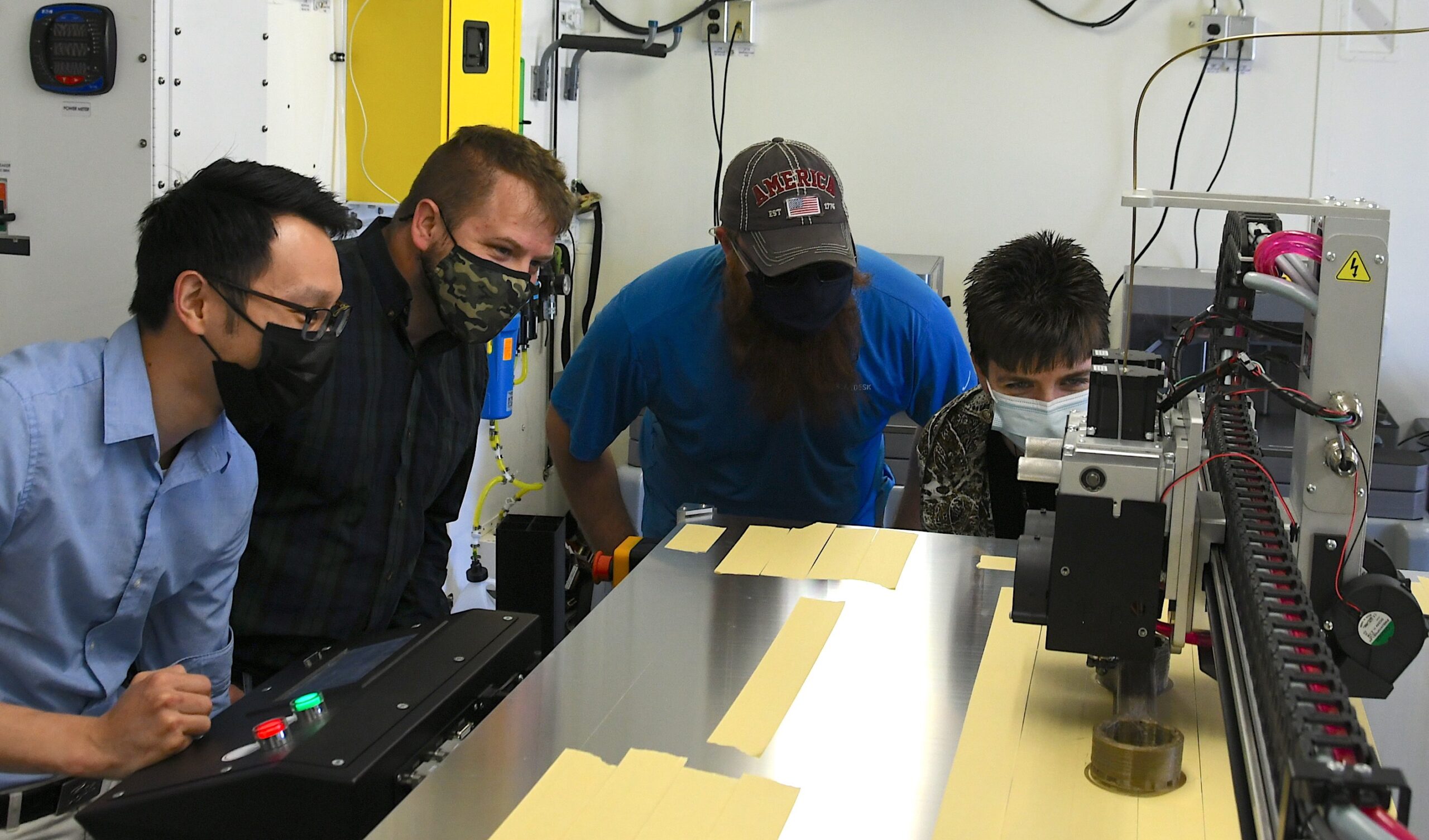
The XFAB is a self-contained, transportable additive manufacturing lab that can deploy with battalion-level Marine maintenance units. The 20-by-20-foot shelter is collapsible for easier transport and houses five 3D printers, a laser scanner, a laser cutter and a computer design software system that enables Marines to fabricate replacement and repair parts in an expeditionary environment.
“MCTSSA offers a great opportunity to exercise the XFAB on the [Marine Corps Enterprise Network] and capture the messaging traffic and data packing messages in real time,” said Robert Davies, project officer for Fabrication Equipment under the Program Manager for Supply and Maintenance Systems at Marine Corps Systems Command. “The test directors and support staff at MCTSSA were a pleasure to work with.”
The goal of the testing event was to evaluate the connectivity of the Marine Corps’ closed computer network to determine if any adjustments are needed before reaching final operational capability and delivering labs to the Fleet Marine Forces in June 2022.
XFAB has been in development stages for approximately five years. It is designed to provide Marines a way to innovate by creating their own manufacturing tools, parts and signage. This unique capability can be employed in forward-deployed locations when specialty and hard-to-find parts are not readily available.
“MCTSSA is a great place for this kind of testing and demonstration,” said Lt. Col. Michael Liguori, commanding officer of MCTSSA. “Our location makes it easy for fleet units to visit and see the layout of the equipment first-hand. We’re proud to support the Supply and Maintenance Systems program manager and their team as they move closer to fielding this new capability to the operational forces.”
Impact and Implementation
Each lab comes equipped with two Lulzbot TAZ Workhorse 3D Printers, two Markforged X7 3D printers, one 3D Platform 3000 Series Printer, and one Epilog Fusion Pro 32 Laser Cutter and a Quantum FAROArm S 3D laser scanner. The XFAB also comes standard with three laptops, two workstations and one 55-foot LED television screen.
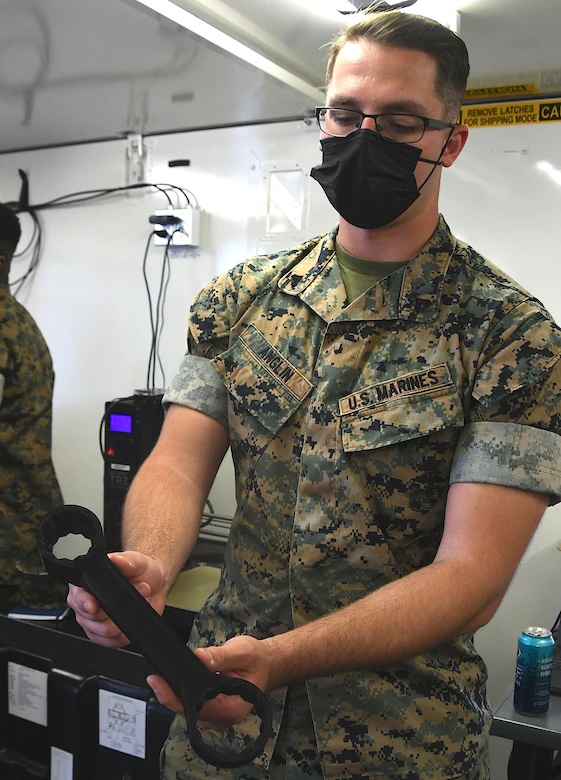
When integrated into a Marine Expeditionary Force, the XFAB will reduce the maintenance battalion’s logistics footprint by eliminating the need to transport large amounts of spare parts.
“As this technology and overall asset is brand new to the FMF, the maintenance community is extremely excited to receive their assets and begin use of the 3D scanning and printing capabilities,” said Davies. “While some FMF units have 3D printers, those assets were procured with unit funds.”
The XFAB capability is an MCSC Program of Record and will be a supported asset in the fleet, which will make integration for deployments much easier, Davies said.
Demo Days
During the testing event at MCTSSA in early April, senior leaders and Marines from 1st Marine Logistics Group, 1st Light Armored Reconnaissance Regiment, 3rd Amphibious Assault Battalion and 3rd Marine Aircraft Wing got a first-hand look at the equipment and how they can manufacture parts and products.
The XFAB container runs on generator or shore power, and takes a team of four Marines two-to-three hours to set up and tear down. It weighs about 10,500 pounds fully equipped and can be transported via the Logistics Vehicle System Replacement or a commercial flatbed truck.
A New Tool in the Tool kit for FMF
By design, the XFAB and its components are to be operated by a Marine Machinist (MOS 2161) as their primary duties include support of unit maintenance to include fabrication, repair or modification of equipment. However, the XFAB is composed of several workstations that would require just one Marine to be present to operate the equipment and tools.
Several items can be printed and manufactured, including the detonation cord connector, SABER handgrip removal tool, radio handset covers, M320 hammer strut tool, reinforced high-mobility multipurpose wheeled vehicle door handles and a universal load stud wrench for use with all generators.
“Due to the solid MCEN design from our supporting establishments, Naval Surface Warfare Center Crane and Carderock, we have had no redesign efforts required and have passed all testing while at MCTSSA with no outstanding issues to resolve,” Davies added.
A future design is under development with a more tactical version of XFAB called Tactical Fabrication and will soon approach its fielding decision, Davies added. This system will be slightly limited in capability but will be modular, stored in pelican cases, and is specific to a particular MOS.
The current requirement is to deliver 21 XFAB units. II Marine Expeditionary Force is scheduled to receive the first one sometime in mid-2022.
By Amy Forsythe, Public Affairs Officer, MCTSSA
RESEARCH TRIANGLE PARK, N.C. — Immersive virtual reality isn’t just for amusement parks, the U.S. Army is funding research that uses it to understand group dynamics.
The U.S. Army Combat Capabilities Development Command, known as DEVCOM, Army Research Laboratory funded scientists at Kent State University’s Electrophysiological Neuroscience Laboratory to create an immersive virtual reality lab that can be used in tandem with their other biophysiological technologies to advance an interdisciplinary understanding of group dynamics.

Immersive reality combines virtual reality with images, sounds, or other stimuli to provide an engrossing environment.
According to Dr. Bruce West, a senior Army scientist, the military is becoming increasingly reliant on small special operations teams, but little is known about how small groups function in these extreme environments. The research team uses cutting edge electrophysiological and physiological equipment to probe team functioning and decision-making under threat.
“In order to make valid and efficacious practical recommendations for small special operations teams in the modern global military context and other threat environments, Soldiers can benefit by training in immersive virtual environments to make them feel like they are really there,” said Dr. Lisa Troyer, program manager, social and behavioral sciences, ARL. “The immersive virtual reality system at Kent State University is developing more valid, impactful knowledge about how teams and individuals navigate dangerous environments.”
The lab includes cutting edge virtual reality headsets with three-dimensional eye tracking and omnidirectional treadmills, which can be integrated with EEG and other emerging biometric technologies.
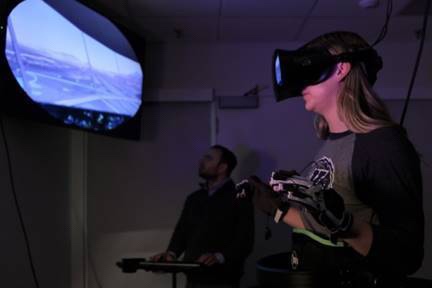
“With this lab, ENLoK is generating path-breaking social science discoveries,” Troyer said. “The team’s efforts are leading the use of immersive virtual reality and capabilities to identify neurological signals of influencers in groups that can support Army missions by better understanding Army influence networks as well as adversarial groups.”
In earlier research, also funded by ARL and published in Social Psychology Quarterly, the Kent research team conducted a series of experiments manipulating status and used brain activity analyses to successfully identify neurological signals during social interaction that are unique to others’ perceptions of high status actors and their influence over group members.
“Understanding the consequences of status-based behavior in a variety of settings, including small team contexts, can help the Army prepare and train for modern military operations,” said Dr. Will Kalkhoff, ENLoK’s director and professor of Sociology at Kent State University. “The Army can also use the knowledge we are developing to better understand how influencers in allied groups support Army missions through their social networks or how adversarial groups mobilize.”
Now, the research team at Kent State is partnering with MILO, an Ann Arbor, Michigan-based component of Arotech’s Training and Simulation Division that provides immersive training solutions for military and law enforcement organizations around the world. The objective is to improve police and military readiness by integrating rigorous social science with emerging technologies already in use throughout the Department of Defense.
“Support and assisted facilitation of this kind of social research is exactly why we established the MILO Cognitive Division,” said Robert McCue, MILO’s general manager. “Our ultimate goal is to advance the scientific understanding of behavior and decision-making under threat and, in so doing, reduce danger to our servicemen and women and improve mission success by facilitating team functioning under threat.”
By U.S. Army DEVCOM Army Research Laboratory Public Affairs
The Army Applied Small Business Innovation Research (SBIR) Program released 28 contract opportunities for U.S.-based small businesses to tackle challenges in some of the Army’s most critical modernization priorities. Phase I awards are nearly $260,000 and six months in duration, and Phase II are up to $1.7 million and 18 months in duration.
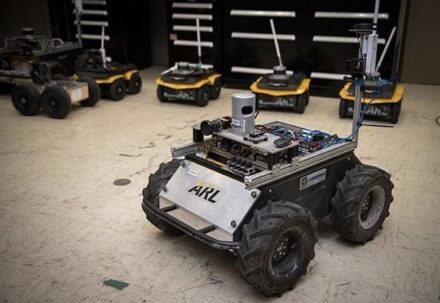
“Partnering with our small businesses is critical in helping us to develop innovative technology to support the Army and our Soldiers,” says Dr. Matt Willis, Director, Army Applied SBIR and Prize Competitions in the Office of the Deputy Assistant Secretary of the Army for Research and Technology (DASA (R&T)). “These crucial partnerships not only foster, strengthen and encourage the roles of small businesses, but also help us modernize our world-class Army and transition life-saving technology into the hands of our Soldiers.”
Phase I releases comprise 27 of the 28 Army Applied SBIR topics:
Advanced Manufacturing
– Impact Resistant Baseplate
– Digital High-Energy Neutron Radiography (NR) Detection Panel
– Development of Novel Miniature Reserve Batteries on the Chip
– Large Format Color Low Light Level (LLL) Focal Plane Arrays (FPAs)
– Full Color, Low Power, High Brightness Micro-Display Capabilities
– Picatinny Smart Rail (PSR) Enabler Integration
– Environmental Conditioning of Man-Portable Weapons Systems
AI/ML
– Behavioristic Electromagnetic Spectrum Assessment General Learning Engine (BEAGLE)
– Advanced GPS-Based Minefield Detection/Clearance System
– Stationary Target Indicator Waveforms for Theoretical Active Electronically Scanned Array Antenna
– Unmanned Aircraft System (UAS) Full Motion Video (FMV) Enhancement
– Pandemic Entry & Automated Control Environment (PEACE)
– Recognition Biometric Camera System
– Biometric Data Cleansing
– Correlation of Detected Objects from Multiple Sensor Platforms
– Multi-Spectrum Combat Identification Target Silhouette (MCITS)
– Immersive Gaming of C5ISR Training and Testing
– CTA Track/Discrim Improvements for Advanced Threats
– Q-53 Long Range Artillery Guidance
– TPQ-53 Managed Comms/Radar Functionality
– Threat/Target Sensor Stimulation Technology
Hypersonics
– Dynamic Hartmann Turbulence Sensor Processing
– Risk Assessment Modeling Tool (RAMoT)
Materials
– Metamaterial Based Antenna
– Wide Bandgap Bi-Directional Converter
– Enhanced Impact Protection HGU-56P Aviator Helmet
– Advanced Thermal Management Systems
This round includes one Direct to Phase II release:
Network
– Dismounted Device-to-Device (D2D) Communication Platform
The submission period for proposals closes May 18 at noon EST (sic). Full proposal packages must be submitted through the DSIP Portal.
Information in this post was gathered from a story written by Michael Howard
Invention Could Solve Waste Management Challenges on the Battlefield
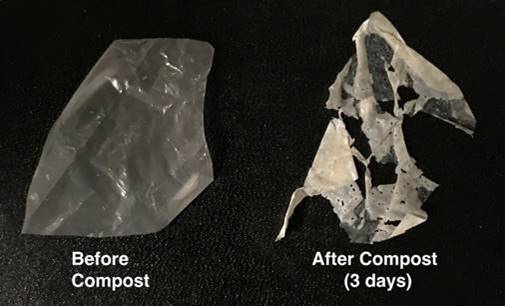
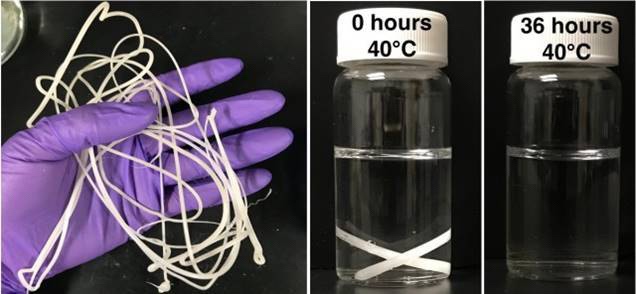
RESEARCH TRIANGLE PARK, N.C. — With Army funding, scientists invented a way to make compostable plastics break down within a few weeks with just heat and water. This advance will potentially solve waste management challenges at forward operating bases and offer additional technological advances for American Soldiers.
The new process, developed by researchers at University of California, Berkeley and the University of Massachusetts Amherst, involves embedding polyester-eating enzymes in the plastic as it’s made.
When exposed to heat and water, an enzyme shrugs off its polymer shroud and starts chomping the plastic polymer into its building blocks — in the case of biodegradable plastics, which are made primarily of the polyester known as polylactic acid, or PLA, it reduces it to lactic acid that can feed the soil microbes in compost. The polymer wrapping also degrades.
The process, published in Nature, eliminates microplastics, a byproduct of many chemical degradation processes and a pollutant in its own right. Up to 98% of the plastic made using this technique degrades into small molecules.
“These results provide a foundation for the rational design of polymeric materials that could degrade over relatively short timescales, which could provide significant advantages for Army logistics related to waste management,” said Dr. Stephanie McElhinny, program manager, Army Research Office, an element of the U.S. Army Combat Capabilities Development Command, known as DEVCOM, Army Research Laboratory. “More broadly, these results provide insight into strategies for the incorporation of active biomolecules into solid-state materials, which could have implications for a variety of future Army capabilities including sensing, decontamination, and self-healing materials.”
Plastics are designed not to break down during normal use, but that also means they don’t break down after they’re discarded. Compostable plastics can take years to break down, often lasting as long as traditional plastics.
The research teams embedded nanoscale polymer-eating enzymes directly in a plastic or other material in a way that sequesters and protected them until the right conditions to unleash them. In 2018, they showed how this works in practice. The team embedded in a fiber mat an enzyme that degrades toxic organophosphate chemicals, like those in insecticides and chemical warfare agents. When the mat was immersed in the chemical, the embedded enzyme broke down the organophosphate.
The researchers said protecting the enzyme from falling apart, which proteins typically do outside of their normal environment, such as a living cell, resulted in the key innovation.
For the Nature paper, the researchers showcased a similar technique by enshrouding the enzyme in molecules they designed called random heteropolymers or RHPs, and embedding billions of these nanoparticles throughout plastic resin beads that are the starting point for all plastic manufacturing. The process is similar to embedding pigments in plastic to color them.
“This work, combined with the 2018 discovery, reveals these RHPs as highly effective enzyme stabilizers, enabling the retention of enzyme structure and activity in non-biological environments,” said Dr. Dawanne Poree, program manager, ARO. “This research really opens the door to a new class of biotic-abiotic hybrid materials with functions only currently found in living systems.”
The results showed that the RHP-shrouded enzymes did not change the character of the plastic, which could be melted and extruded into fibers like normal polyester plastic at temperatures around 170 degrees Celsius (338 degrees Fahrenheit).
To trigger degradation, it was necessary only to add water and a little heat. At room temperature, 80% of the modified PLA fibers degraded entirely within about one week. Degradation was faster at higher temperatures. Under industrial composting conditions, the modified PLA degraded within six days at 50 degrees Celsius (122 degrees Fahrenheit).
Another polyester plastic, PCL (polycaprolactone), degraded in two days under industrial composting conditions at 40 degrees Celsius (104 degrees Fahrenheit). For PLA, the team embedded an enzyme called proteinase K that chews PLA up into molecules of lactic acid; for PCL, they used lipase. Both are inexpensive and readily available enzymes.
“If you have the enzyme only on the surface of the plastic, it would just etch down very slowly,” said Ting Xu, UC Berkeley professor of materials science and engineering and of chemistry. “You want it distributed nanoscopically everywhere so that, essentially, each of them just needs to eat away their polymer neighbors, and then the whole material disintegrates.”
Xu suspects that higher temperatures make the enshrouded enzyme move around more, allowing it to more quickly find the end of a polymer chain and chew it up and then move on to the next chain. The RHP-wrapped enzymes also tend to bind near the ends of polymer chains, keeping the enzymes near their targets.
The modified polyesters do not degrade at lower temperatures or during brief periods of dampness. For instance, a polyester shirt made with this process would withstand sweat and washing at moderate temperatures.
Soaking the biodegradable plastic in water for three months at room temperature did not cause it to degrade, but soaking for that time period in lukewarm water did.
Xu is developing RHP-wrapped enzymes that can degrade other types of polyester plastic, but she also is modifying the RHPs so that the degradation can be programmed to stop at a specified point and not completely destroy the material. This might be useful if the plastic were to be re-melted and turned into new plastic.
“Imagine, using biodegradable glue to assemble computer circuits or even entire phones or electronics, then, when you’re done with them, dissolving the glue so that the devices fall apart and all the pieces can be reused,” Xu said.
This technology could be very useful for generating new materials in forward operating environments, Poree said.
“Think of having a damaged equipment or vehicle parts that can be degraded and then re-made in the field, or even repurposed for a totally different use,” Poree said. “It also has potential impacts for expeditionary manufacturing.”
In addition to the Army, the U.S. Department of Energy with assistance from the UC Berkeley’s Bakar Fellowship program also funded the research.
By U.S. Army DEVCOM Army Research Laboratory Public Affairs
RESEARCH TRIANGLE PARK, N.C. — Army-funded researchers created nanosized robots that could enable locomotion, novel metamaterial design and high-fidelity sensors.
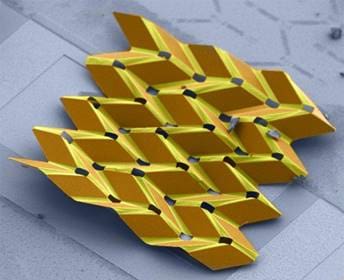
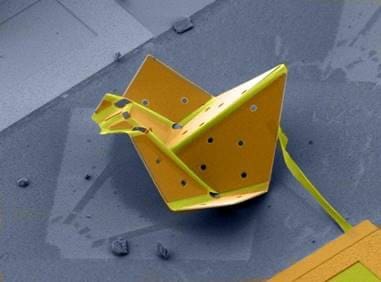
Cornell University researchers created micron-sized shape memory actuators that fold themselves into 3D configurations and allow atomically thin 2D materials with just a quick jolt of voltage. Once the material is bent, it holds its shape, even after the voltage is removed.
To demonstrate the technology, the team created what is potentially the world’s smallest self-folding origami bird.
“The research team is pushing the boundary of how quickly and precisely we can control motion at the micro- and even nano-scales,” said Dr. Dean Culver, program manager for Complex Dynamics and Systems at Army Research Office, an element of the U.S. Army Combat Capabilities Development Command, known as DEVCOM, Army Research Laboratory. “In addition to paving the way for nano-robots, the scientific advancements from this effort can enable smart material design and interaction with the molecular biological world that can assist the Army like never before.”
The research may result in future applications 10 to 20 years from now, he said.
In a peer-reviewed article published in Science Robotics, researchers said this work could make it possible for a million fabricated microscopic robots releasing from a wafer to fold themselves into shape, crawl free, and go about their tasks, even assembling into more complicated structures.
“We humans, our defining characteristic is we’ve learned how to build complex systems and machines at human scales, and at enormous scales as well,” said Prof. Paul McEuen, the John A. Newman Professor of Physical Science at Cornell University. “What we haven’t learned how to do is build machines at tiny scales.”
This is a step in that basic, fundamental evolution in what humans can do, of learning how to construct machines that are as small as cells, he said.
The researchers ongoing collaboration has generated a throng of nanoscale machines and components, each seemingly faster, smarter and more elegant than the last.
“We want to have robots that are microscopic but have brains on board,” said Prof. Itai Cohen, professor of physics at Cornell University. “That means you need to have appendages that are driven by complementary metal–oxide–semiconductor transistors, basically a computer chip on a robot that’s 100 microns on a side. The hard part is making the materials that respond to the CMOS circuits.”
This shape memory actuator developed by the research teams allows them to drive with voltage and make the materials hold a bent shape. The machines fold themselves fast–within 100 milliseconds. They can also flatten and refold themselves thousands of times and they only need a single volt to be powered to life.
“These are major advances over current state-of-the-art devices,” Cohen said. “We’re really in a class of our own.”
These actuators can bend with a radius of curvature smaller than a micron–the highest curvatures of any voltage-driven actuator by an order of magnitude. This flexibility is important because one of the bedrock principles of microscopic robot manufacturing is that the robot size is determined by how small the various appendages can be made to fold. The tighter the bends, the smaller the folds, and the tinier the footprint for each machine. It’s also important that these bends can be held by the robot, which minimizes the power consumption, a feature especially advantageous for microscopic robots and machines.
The devices consist of a nanometer-thin layer of platinum capped with a titanium or titanium dioxide film. Several rigid panels of silicon dioxide glass sit atop those layers. When a positive voltage is applied to the actuators, oxygen atoms are driven into the platinum and swap places with platinum atoms.
This process, called oxidation, causes the platinum to expand on one side in the seams between the inert glass panels, which bends the structure into its predesignated shape. The machines can hold that shape even after the voltage is removed because the embedded oxygen atoms bunch up to form a barrier, which prevents them from diffusing out.
By applying a negative voltage to the device, the researchers can remove the oxygen atoms and quickly restore the platinum to its pristine state. And by varying the pattern of the glass panels, and whether the platinum is exposed on the top or bottom, they can create a range of origami structures actuated by mountain and valley folds.
“One thing that’s quite remarkable is that these little tiny layers are only about 30 atoms thick, compared to a sheet of paper, which might be 100,000 atoms thick. It’s an enormous engineering challenge to figure out how to make something like that have the kind of functionalities we want,” McEuen said.
The team is currently working to integrate their shape memory actuators with circuits to make walking robots with foldable legs as well as sheet-like robots that move by undulating forward. These innovations may someday lead to nanorobots that can clean bacterial infection from human tissue, microfactories that can transform manufacturing and robotic surgical instruments that are 10 times smaller than current devices, according to Cohen.
The team is also researching the principles that need to change in order to design, manufacture and operate machines at this scale.
In addition to ARO, the National Science Foundation, the Cornell Center for Materials Research, the Air Force Office of Scientific Research, and the Kavli Institute at Cornell for Nanoscale Science funded the work.
By U.S. Army DEVCOM Army Research Laboratory Public Affairs